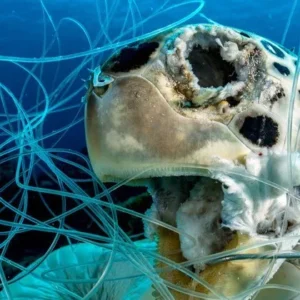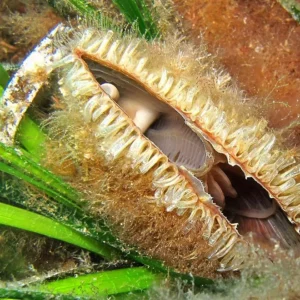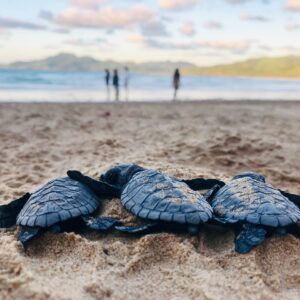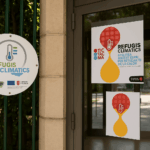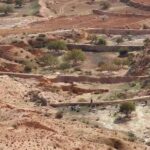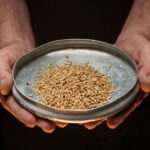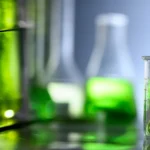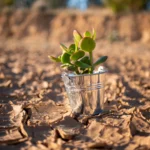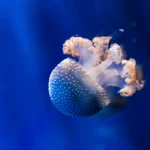Menzel Bourguiba, a town in the north of the country formerly known as Ferryville, has for several decades been affected by pollution from factories located on the shores of the Bizerte lagoon, once one of the most beautiful coastal lagoons in the Mediterranean Sea. Contaminated air, red zones on the surface of the water, hundreds of dead cuttlefish and a worrying decline in the quality of the fish are jeopardizing the survival of many families in the region. In Menzel Bourguiba, an average of one out of every two families earns its living from fishing.
November 2022, Menzel Bourguiba
Fishing in the Bizerte lagoon is in jeopardy
The fishing trade in Bizerte is on the brink of extinction, and I would never encourage my children to go fishing, at least in Menzel Bourguiba, because it has no future.
Ali Ben Salem, fisherman, aged 42.
Ali, an artisanal fisherman since 2003, is certainly not alone in expressing concern about his only livelihood.
This anguish is shared by all the region’s fishermen. The drastic reduction in fishing income in recent years has forced many fishermen to put their nets and rods out of business. They could no longer afford to maintain their fishing boats and nets.
For Hayet Amdouni, Doctor of Dermatology and Venereology and President of the Association Tunisienne Santé – Environnement in Menzel Bourguiba, it’s also a question of health.
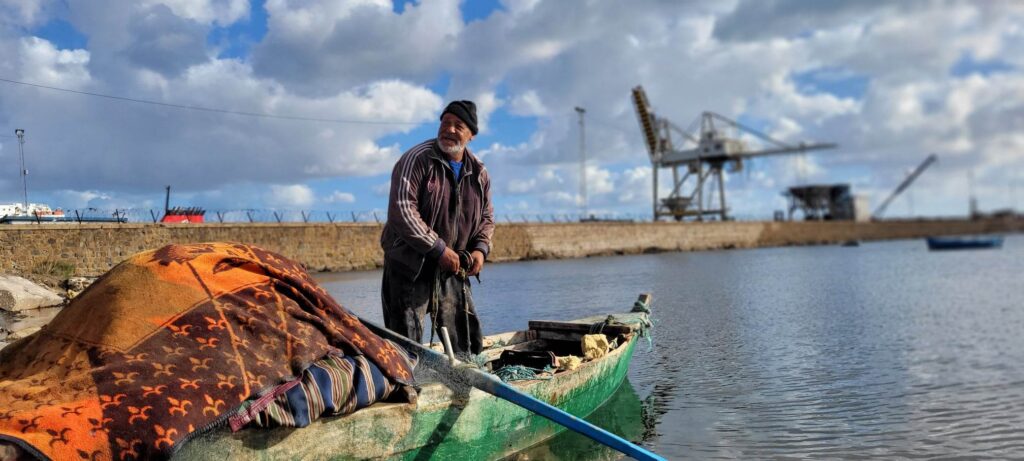
Civil society and environmentalists are expressing their fury and anger at the pollution caused by industries, particularly the steel industry. This level of pollution is not only a source of lung and respiratory infections among residents, through inhalation of factory smoke, but also affects the ecological wealth of the Bizerte lagoon, the source of income for many families in the region.
Hayet Amdouni
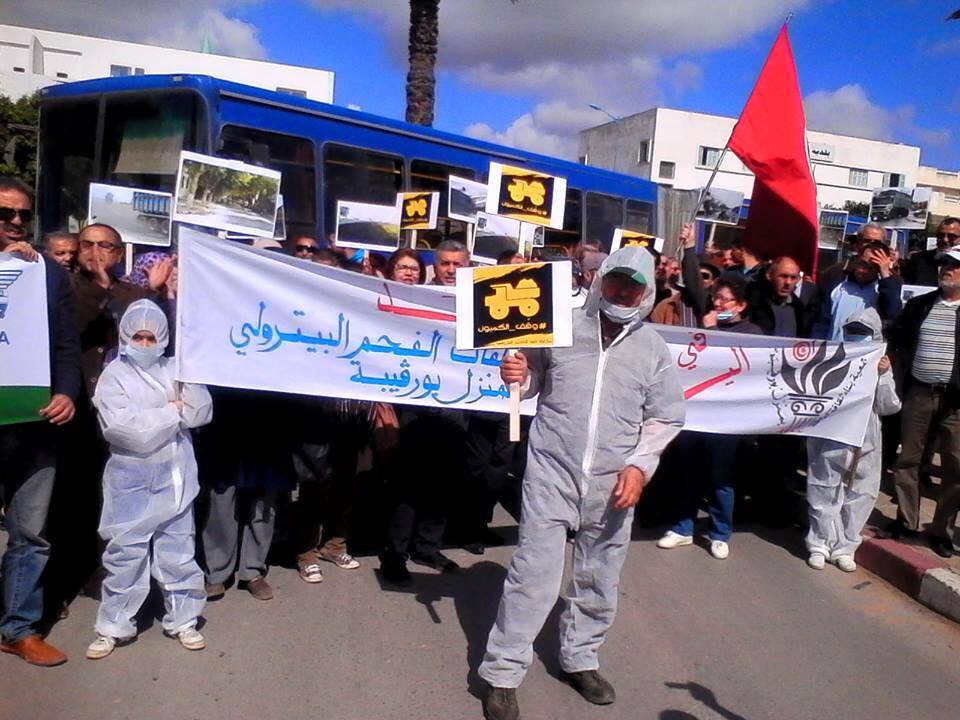
At the edge of the lagoon, near the steelworks, fishermen often haul in their nets with a reddish color due to the concentration of acid from the discharge of sewage and steelworks waste into the lagoon.
Recounts A.B.Salem
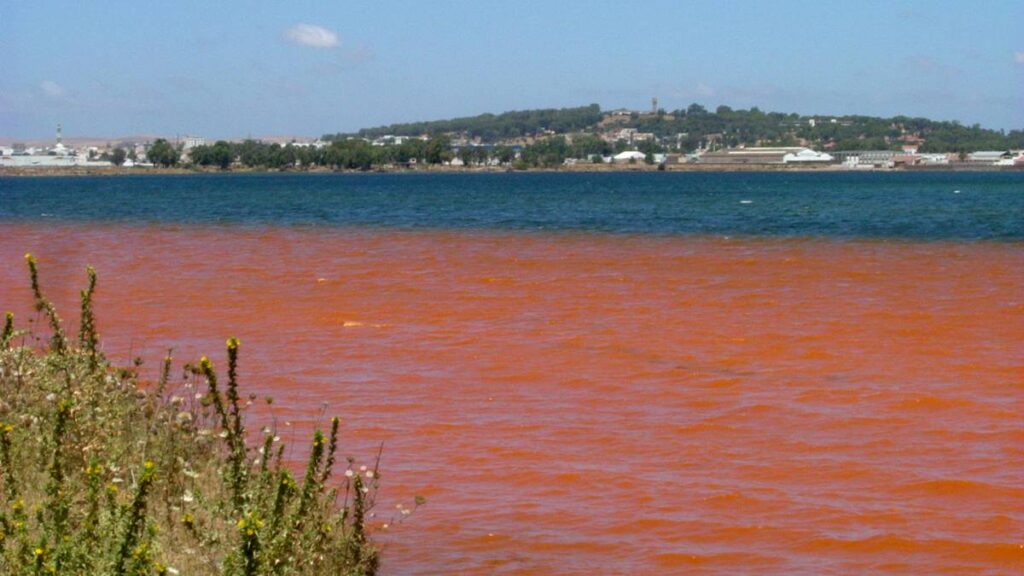
It used to be that when we threw out our nets, a few hours later we’d haul them back up full of fish. But with this pollution, we leave our nets in the lagoon all night, and get very few fish. The lagoon’s flagship species, such as eel, mullet and sea bass, have all but disappeared from the lagoon. Previously, the lagoon was home to many species, with generous quantities. Daily catches exceeded 20 kilos, equivalent to two whole baskets. But today, if we manage to get half a basket full, it’s a good day for us! The quantity of fish products has been greatly reduced by pollution.
Adds A.B.Salem
The same observation is shared by Kamel Rezgui, an amateur fisherman and diver for 45 years.
This town used to be a jewel of nature. If you look at the archive images of Ferryville, you’ll see the true beauty of nature. Now all you see in this town is pollution!
K.Rezgui
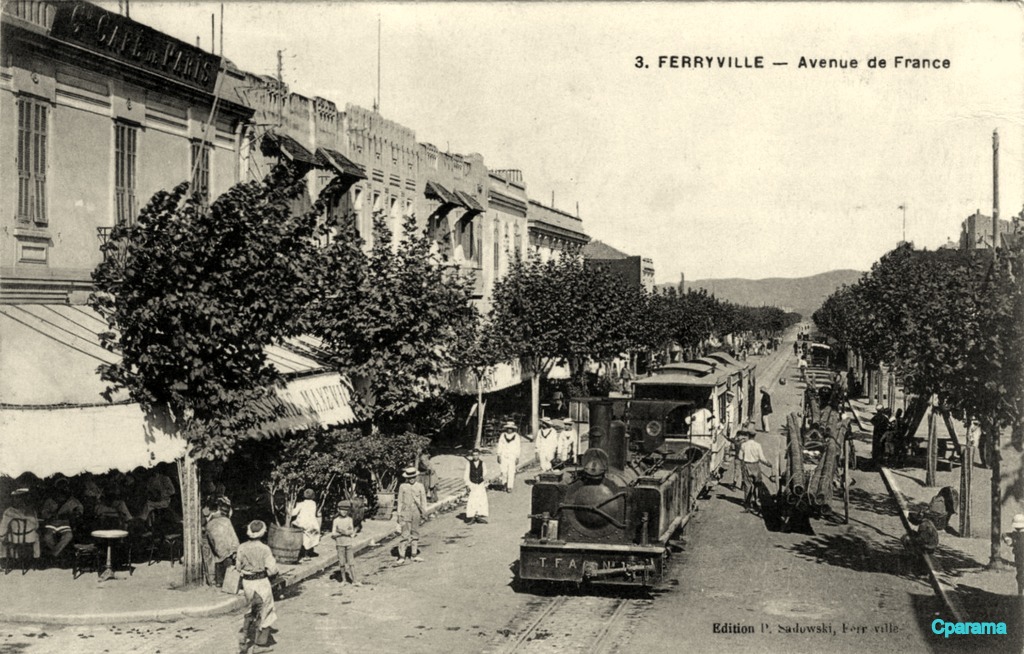
The Bizerte lagoon between the hammer of industry and the anvil of ONAS
With a surface area of 128 km², Lake Bizerte is linked to the Mediterranean Sea by the Bizerte Narrows and to Lake Ichkeul by a 5 km-long channel, the Oued Tinja.
Since the 1960s, the coastal depression1 of the Bizerte lagoon has been subjected to a series of intense anthropogenic pressures. Water and solid waste from heavy industrial, agricultural and household activities are discharged directly into the lagoon. They contain toxic chemical pollutants that cause biological dysfunction in the lagoon.
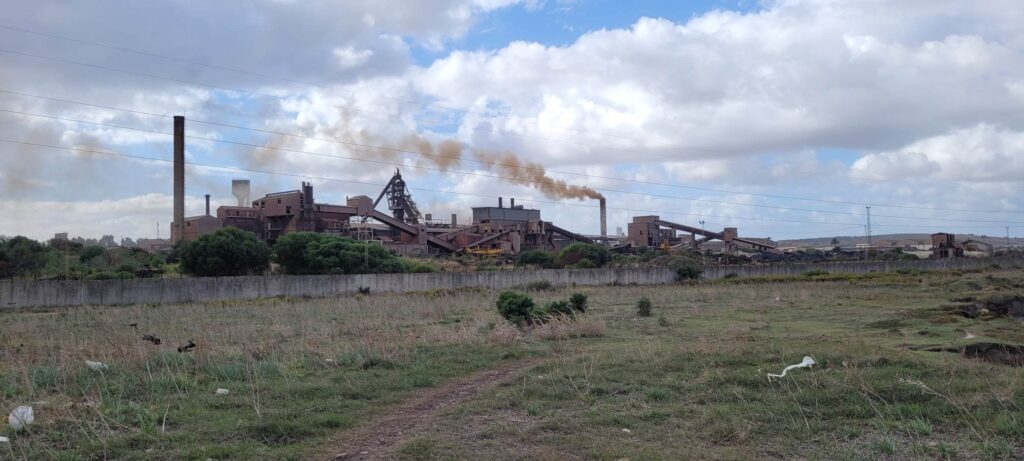
The challenge of creating economic opportunities for the region’s inhabitants has intensified the installation of numerous factories around the lagoon: iron and steel, cement, leather, sugar, batteries, jeans washing, tire manufacturing and boat building.
This economic issue is bound to have a negative impact on the environment. Huge quantities of chemicals are discharged into the lagoon ecosystem, including Polycyclic Aromatic Hydrocarbons (PAHs) (Naphthalene), Polychlorobiphenyls (PCBs), pesticides (DDT, Simazine and Tebuconazole) and trace metals (Lead, Mercury, Cadmium, Iron, Zinc, Copper…).
K.Rezgui sounded the alarm about the impact of lagoon pollution on aquatic biodiversity. According to him, the pollution is not only caused by the industries located on the lagoon’s shores, but also by the discharge of untreated wastewater from the ONAS sewage system.
This untreated household waste is dumped entirely into the lagoon via open channels, forming a noxious mixture of chemical pollutants and human waste with the lagoon floor, which can even be inhaled underwater.
Deplores K.Rezgui
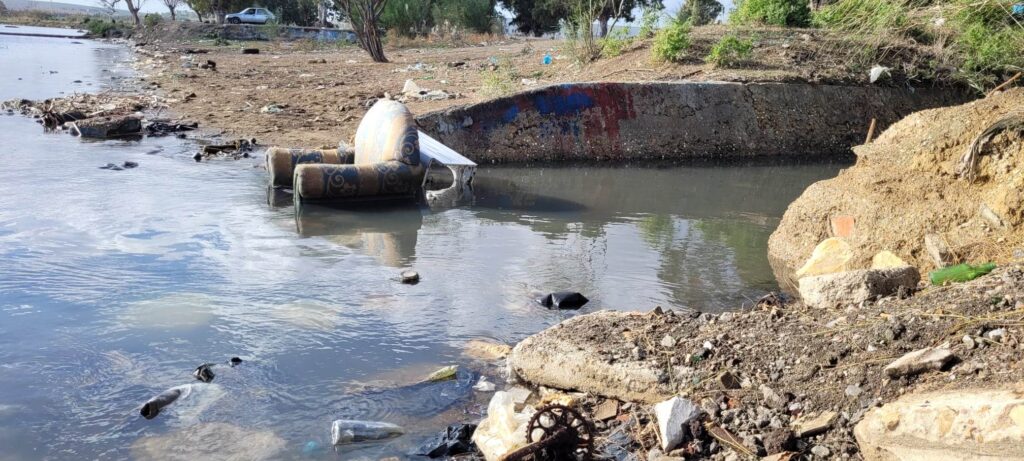
I’ve been diving in the lagoon since I was fifteen. The seabed has changed dramatically in recent years. This is due to the dumping of toxic waste into the lagoon, without prior treatment. I’ve even found 300 bars of scrap metal abandoned on the seabed. Near the boat-building workshops, the areas are completely devoid of aquatic vegetation.
K.Rezgui
According to him, this desertification is caused by sandblasting at the boatbuilding plant, which consists of a compressor blowing air with sand, to remove the old paint from the boats.
A biodiversity reservoir on death’s door
Biodiversity in the lagoon is severely weakened by chemical and toxic pollutants discharged directly into the Bizerte lagoon. Substances from untreated sewage or toxic waste directly disposed of in the lagoon indicate that benthic organisms are at high ecological risk.
Mullet, eel and sea bass, the fish species that have traditionally occupied the lagoon, feed on pelagic 2 and benthic 3 microorganisms. Today, these species live in an unsuitable environment that is not conducive to their growth due to pollution. In his thesis presented in 2014, Badreddine Barhoumi, PhD in biology, assessed the lagoon’s level of contamination through the prism of three families of persistent organic pollutants: polycyclic aromatic hydrocarbons (PAHs), polychlorinated biphenyls (PCBs), and organochlorine pesticides (OCPs).
He examined their levels in mussels and gobies, intentionally selected from wastewater treatment plants located near industrial sites. Among the experiments carried out: a sediment sample taken near the plants was brought into contact with fish eggs. The result after 20 days: adult fish showed cardiovascular malformations.
Another example that illustrates the strong impact of industrial pollution on marine fauna is the iron sludge dissolved in the depths, which has changed the consistency and biological composition of the seabed.
To obtain further information on the contamination of fish by organic pollutants and assess the potential risks of their consumption, work on the contamination of Liza Aurata mullet by PAHs was carried out in 2018 2) in the Bizerte and Ghar El Melh lagoons.
The results of this work reveal that PAH residues are found in the muscles of this benthopelagic fish species. The PAHs around the lagoon come from a mixed contamination of petrogenic 4 and pyrogenic 5 processes.
At the same time, this pollution has manifested itself in the behavior of marine species in the lagoon: the sugar factory caused the appearance of a frightening phenomenon last year, which is the stranding of tons of cuttlefish on the beach, according to the testimonies of fisherman Ali and diver Kamel.
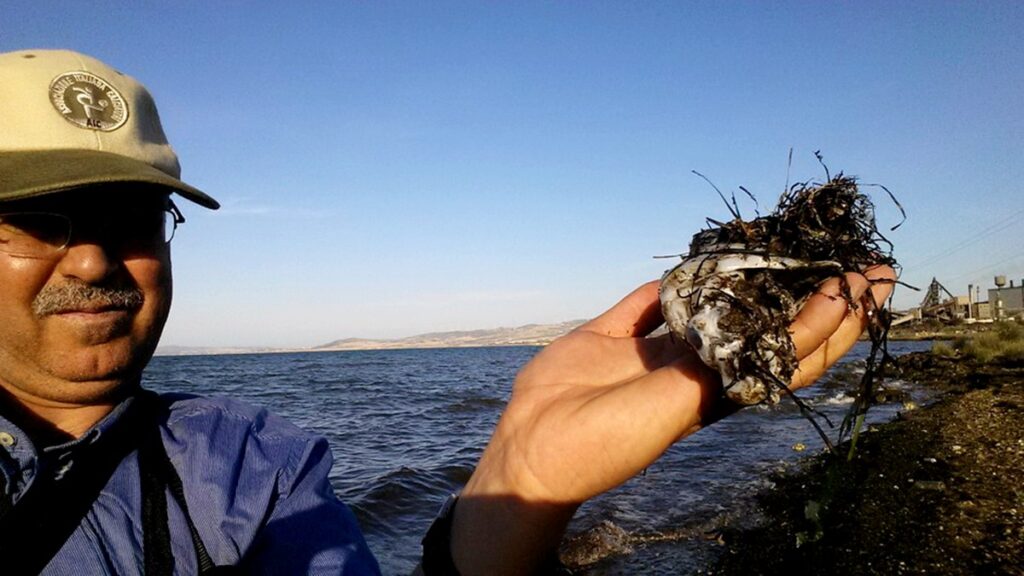
Near the sugar factory, large quantities of shrimp are found, as the factory discharges untreated hot wastewater, with a high concentration of sugar, the two main factors for shrimp growth.
Says K.Rezgui
At the same time, fishermen claim that this form of pollution is responsible for the overabundance of species not usually found in the lagoon, such as shrimps and triggerfish, also known as sea pigs.
A serious threat to public health
These chemical pollutants have harmful effects on the health of the region’s inhabitants. Badreddine Barhoumi stated that PAHs present in fish are carcinogenic. PCBs are also risk factors, and their consumption can cause respiratory diseases. This was also confirmed by Dr. H. Amdouni.
It’s important to understand that environmental causes and health are closely linked. Because of the heavy pollution caused by toxic chemicals, eczema allergies and many other dermatological diseases are very common in Menzel Bourguiba.
Explains H.Amdouni
The Tunisian State: between economic development and environmental protection
The town of Menzel Bourguiba faces a major economic and environmental dilemma: while industrialization in Menzel Bourguiba may have solved economic problems, it has also caused environmental and health problems, depriving residents of a healthy, balanced life.
The “polluter pays” principle is no longer relevant. It boils down to the non-application of environmental and ecological taxes, set for industrial pollution. It’s no longer the solution to the problem.
H.Amdouni
The criminal sanctions imposed on polluting industrial companies are not enforceable, so polluters are left with no limits and no supervision.
Adds H.Amdouni
It’s still possible to save the lagoon. But we must act quickly
In fact, according to Lassaad Chouba, a teacher-researcher in marine environment and lecturer at the Institut National des Sciences et Technologies de la Mer in Tunisia, the aquatic ecosystem could well regain its ecological equilibrium after a while, simply by stopping the direct discharge of contaminated sewage and toxic waste.
It all depends on the species: if you place contaminated fish or shellfish in another, cleaner environment, after 3 or 4 months, these organisms will become decontaminated.
Explains Lassaad Chouba
For its part, the Tunisian government has launched its first investment project under the Euro-Mediterranean Horizon 2020 initiative, aimed at upgrading the environmental performance of numerous polluting factories. The aim is to integrate pollution control measures such as the development of waste treatment sites, as well as wastewater treatment and filtration systems.
On the civil society side, the Association Tunisienne Santé – Environnement in Menzel Bourguiba has proposed working upstream, as part of the Horizon 2020 program, to neutralize harmful discharges and comply with ecological standards.
says Hayet Amdouni
The transition to a more sustainable socio-economic model that respects nature by treating waste and preserving the natural environment in which industries are located is the only path that will lead us to cleaner cities and environmental justice.Gunter Pauli’s blue economy principle is the best example to follow for a sustainable development model.
This article was developed in collaboration with the Earth Journalism Media Mediterranean Initiative.
1 A lagoon is a coastal depression located below mean sea level, in permanent or temporary communication with the sea, but isolated from it by a barrier beach or other type of littoral barrier.
2 Pelagic micro-organisms are very small animal or plant organisms that do not live on the seabed, but swim and float in open water, as opposed to benthic micro-organisms.
3 A species of fish that lives either on the bottom or in open water.
4 Formation from petroleum products or derivatives of petroleum products.
5 Which causes inflammation
Sources:
Badreddine Barhoumi. Biomonitoring of pollution in the Bizerte lagoon (Tunisia) by comparative analysis of contamination levels and ecotoxicity of sediments and biota. Ecologie, Environnement. University of Bordeaux; University of Carthage (Tunisia), 2014. French.
Takoua Mhadhbi. Dynamics of pesticides in a lagoon ecosystem (Bizerte lagoon, Tunisia): identification of sources of contamination and contaminant transformation processes. Human Medicine and Pathology. University of Montpellier; Faculty of Sciences of Bizerte (Tunisia), 2019. French.
Ben Mna, H., Alsubih, M., Helali, M. A., Oueslati, W., Added, A. & Aleya, L. (2022). Earlydiagenetic behavior of trace metals along with estimation of their diffusive fluxes : Ecological risk assessment in pore water and sediment of Bizerte Lagoon, Tunisia. Marine Pollution Bulletin, 185, 114139. https://doi.org/10.1016/j.marpolbul.2022.114139
Walid Ben Ameur, Ali Annabi, Takoua Mhadhbi et al. First assessment of Polycyclic Aromatic Hydrocarbons contamination and associated human health risk in Mullet (Liza aurata) from Tunisia: case of Bizerte and Ghar El Melh Lagoons, 19 May 2022, PREPRINT (Version 1) available at Research Square[https://doi.org/10.21203/rs.3.rs-1629904/v1
Copyright © 2022 Blue Tunisia. All rights reserved
